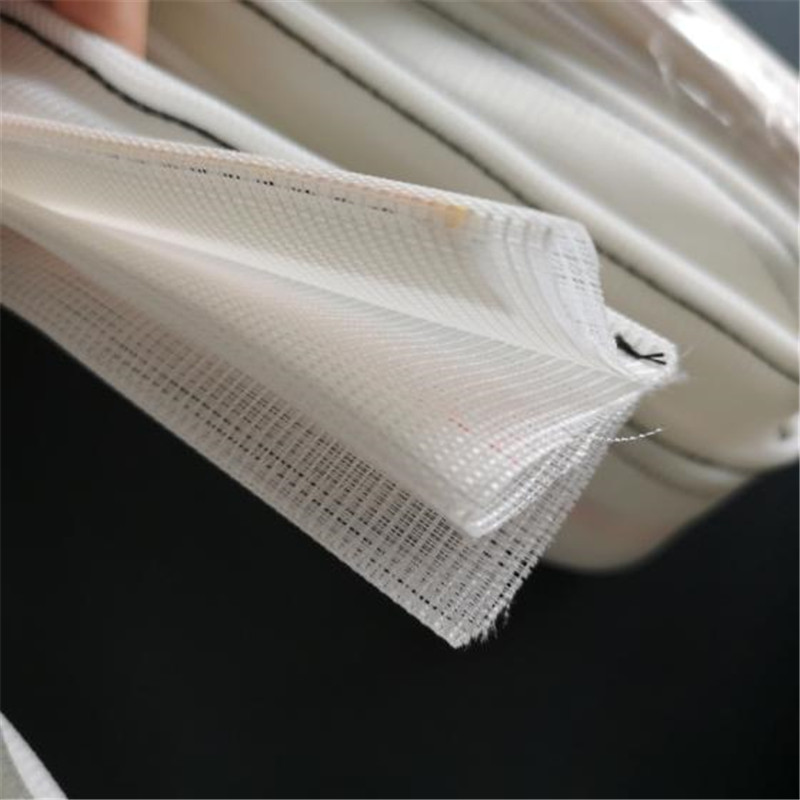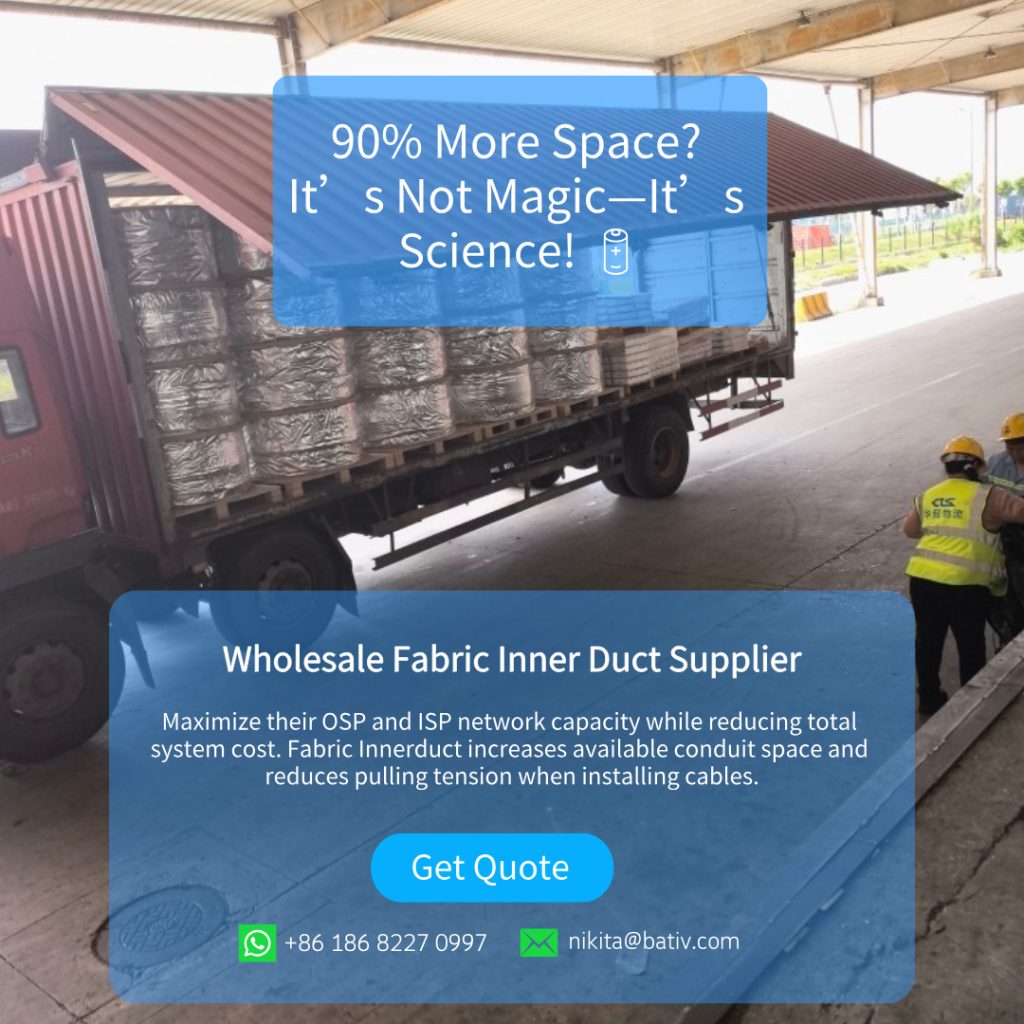In the dynamic world of data center development, every decision counts, especially when laying the foundation for your physical infrastructure. One choice that offers significant benefits in maximizing space, enhancing flexibility, and ensuring scalability is the selection of the right innerduct for your fiber optic pathways. Specifically, a 3-inch, 3-cell fabric innerduct stands out as a superior solution for optimizing existing conduit space and planning for future growth.

This extensive guide will walk data center project managers and engineers through the critical factors for choosing the ideal 3-inch, 3-cell fabric innerduct, ensuring your facility is robust, compliant, and ready for tomorrow’s demands.
Understanding Fabric Innerduct Technology
Traditional rigid HDPE innerducts are effective, but their design often results in wasted space within larger conduits. Fabric innerduct, made of a flexible, tear-resistant textile material, collapses when empty and expands to accommodate cables, using up to 80% less space than rigid options and boasting a significantly higher fill ratio. This makes it an ideal solution for retrofitting existing, often congested, infrastructure or optimizing new conduit installations. The 3-cell configuration creates three separate, distinct pathways within a single 3-inch space, offering excellent cable organization and protection.

Key Considerations for Selection
Choosing the correct 3-inch, 3-cell fabric innerduct involves evaluating several technical specifications and project requirements.
1. Material and Durability: The Foundation of Reliability
The harsh environment of a data center, with potential for abrasion, tight bends, and chemical exposure, demands a durable material.
- Tear Resistance: Ensure the fabric is highly tear-resistant to withstand the physical demands of cable pulls and long-term use.
- Abrasion and Puncture Resistance: The material must protect delicate fiber optic cables from damage during and after installation.
- Chemical Resistance: The innerduct may be exposed to various chemicals or oils found in underground or underfloor environments. Confirming resistance to common substances ensures a longer lifespan.
- Temperature Range: Data center environments can experience temperature fluctuations. Verify the product’s operating temperature range is suitable for your specific installation location (e.g., plenum, riser, or general purpose spaces).
2. Fire Safety and Code Compliance: A Non-Negotiable Standard
Safety and regulatory compliance are paramount in data center operations. The innerduct must meet strict fire safety standards, especially when used in internal building pathways.
- UL Listing: Look for products that are UL Listed and comply with standards like UL 2024 for optical fiber/communications raceways.
- NEC Articles 770 and 800: Compliance with the National Electrical Code (NEC) per Articles 770 (Optical Fiber Cables) and 800 (Communication Circuits) is essential for passing inspections and ensuring safety.
- Plenum vs. Riser Ratings:
- Riser (CMR/OFNR): Suitable for vertical runs between floors.
- Plenum (CMP/OFNP): Required for use in environmental air-handling spaces (plenum spaces), such as above suspended ceilings or below raised floors, which are common in data centers. Ensure your chosen fabric innerduct has the appropriate fire rating for your specific application within the building.
3. Installation Features and Ease of Use: Streamlining Deployment
Efficient installation saves time and labor costs. Modern fabric innerducts come with features that greatly simplify the process.
- Pre-installed Pull Tape: This is an essential feature. Without a pre-installed pull string or tape, extra labor and equipment would be required to blow in a pull line, adding significant cost and complexity. The pull tape should have a high enough tensile strength to handle long, heavy pulls.
- Low-Friction Liner: An internal low-friction liner allows cables to glide smoothly with reduced tension, minimizing the risk of damage to the delicate fiber optic strands during installation.
- Sequential Footage Markings: Clear, sequential markings allow installers to easily track the exact length used and how much remains on the spool, aiding in inventory management and accurate length identification.
- Flexibility: The inherent flexibility of fabric innerduct is a major advantage, allowing it to navigate tight corners and complex layouts without kinking or breaking, which rigid HDPE cannot do as effectively.
4. Color-Coding and Identification: Mastering Cable Management
In complex data center environments, organization is key to efficient maintenance and troubleshooting.
- Multiple Color Options: Select a vendor that offers multiple colors (e.g., green, black, blue, red, yellow). Color-coding helps distinguish different pathways or cable types (e.g., power vs. data, different service providers, different departments).
- Custom Printing: Some manufacturers offer custom printing on the fabric, allowing for specific labeling, such as project names, dates, or circuit IDs, enhancing overall cable management.
5. Scalability and Future-Proofing: Planning for Tomorrow
Data centers require significant scalability and flexibility to support new technologies and future growth. The 3-inch, 3-cell design inherently supports future expansion.
- Maximized Fill Ratio: By effectively utilizing up to 80% of the host conduit’s space, you can run more cables in the same pathway, delaying or eliminating the need for costly new trenching or conduit installation.
- Reserved Pathways: The 3-cell structure allows you to use one cell now and reserve the other two for future cable installations, providing a clear strategy for incremental growth without service interruptions.
6. Vendor Reputation and Support: A Reliable Partnership
The manufacturer’s reputation is as important as the product itself.
- Vendor Support: Choose a vendor that provides technical support, installation guides, and resources.
- Availability: Ensure the product is readily available from reliable distributors to avoid project delays.
- Cost-Effectiveness: While price is a factor, consider the total cost of ownership. The time and labor savings from easier installation, combined with the longevity and flexibility of a quality fabric innerduct, often make it a more cost-effective choice in the long run.
Conclusion
The selection of a 3-inch, 3-cell fabric innerduct is a strategic decision that can significantly impact the operational efficiency, scalability, and cost-effectiveness of your data center project. By focusing on durability, fire safety compliance, installation-friendly features, and clear cable management options, you can choose a solution that protects your fiber optic infrastructure and provides a robust, future-proof foundation for your data center’s evolving needs.